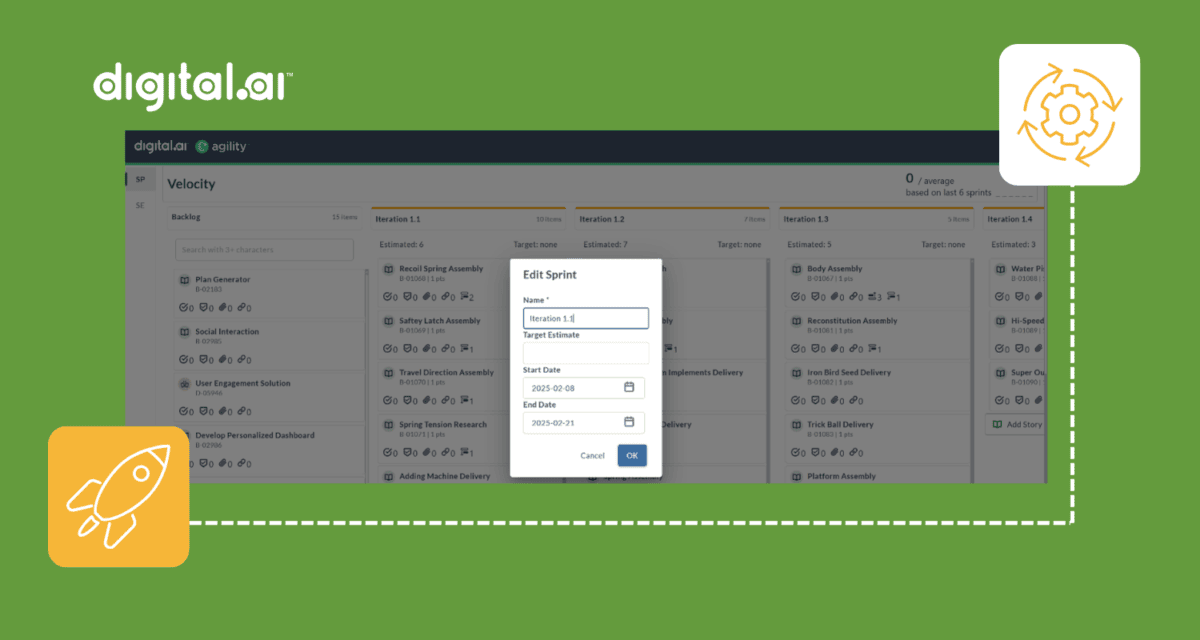Table of Contents
Related Blogs
The following six tips, derived in part from our “Value Stream Management for the Digital Age” eBook, can help organizations learn how to build a resilient team.
Agile frameworks prize the quality of resilience within every facet of work. Traditional corporate bureaucratic environments are not inherently resilient, and in fact, they can be quite the opposite. Challenges are often met with delegation, avoidance, or a reluctance to address the root cause of problems. Inter-team dependencies can mean that needed work gets bottlenecked, backlogged, and queued. Most notoriously, inconsistent accountability can mean that the people most responsible for a positive outcome are not the ones rewarded; they may even not be able to visibly see the outcome of their resolution efforts.
Agile working cultures have several ways of dealing with these shortcomings, and none is so important as the self-reliant, cross-functional agile team. Cross-functional teams can be a core component of resilience, minimizing the need for handoffs or delegation while encouraging a culture of seeing processes through to their results. Agile also encourages transparency, openness, and self-reflection.
All of these qualities provide crucial levels of team resilience. Those following cross-functional teams’ best practices will not only respond to challenges without wilting, but in some cases, they may even proactively identify looming issues before they can negatively impact value.
The following six tips, derived in part from our “Value Stream Management for the Digital Age” eBook, can help organizations learn how to build a resilient team — while also understanding the values that act as foundational supports for organizational resilience in the first place.
1. Build teams with skills and roles from across silos
The ideal cross-functional team represents skillsets, knowledge, and disciplines sourced from across traditional corporate silos. Cross-silo team member sourcing provides a self-sustaining micro-ecosystem, which is capable of recognizing hurdles and clearing them through mutual support and creativity.
Just as important, cross-functional capabilities mean the team can track work through from beginning to end to ensure a specific outcome without any slowdowns in work output.
In the words of Digital.ai VP Richard Knaster, “this organizational design reduces handoffs and delays caused by pushing work across silos.”
Recognizing how technology architectures can mirror corporate silos, Knaster suggests that instead, organizations structure teams such that technology and work process can reflect the ideal technology architecture. Siloed teams often lead to siloed architecture, with different systems and technology in place for each silo — an effect known as “Conway’s Law”. This phenomenon results in technological redundancies, as well as difficulties carrying work from one silo to the next.
As an example, on-premises IT support can have different systems and access capabilities compared to customer-facing support. This architecture means that if a customer-facing issue involves on-prem technology, a separate ticket has to be filed and customer IT reps must wait on internal reps for the issue to be resolved.
“The implications of team structure on architecture are often overlooked,” asserts Knaster. “The team’s organizational design should align with the desired technical architecture, not the other way around.”
If leadership wants transparency within a specific value stream related to online banking, for example, a toolchain needs to be developed that can track everything end-to-end. A specific product team can then monitor work and value as it flows through the toolchain, mirroring the end-to-end architecture.
As Knaster emphasizes, it’s all part of “bringing together the business, product management, development, deployment, and service personnel needed to offer whole product solutions within the same team-of-agile teams.”
2. Form teams focused on a specific value stream-based outcome or capability
The ideal cross-functional team supports a specific aspect of the business that delivers concrete, measurable value to end customers. When team roles are too abstracted from value delivery concerns, the impact of their work on value production becomes obscured, in kind. Keeping teams aligned along value streams is only possible when the team has a permanent role/function to seek goal outcomes.
Despite the need for consistent oversight across a value stream, many cross-functional or inter-silo teams are formed on a temporary project basis. Organizing teams, instead, around value streams make their cross-functional capabilities permanent, allowing them to maintain consistent value delivery.
Emphasize outcomes (teams built around capabilities) rather than outputs (functional job roles)
A seminal, agile-focused article in Harvard Business Review describes this framework in terms of “capabilities” vs “functions”. A function is a departmental concept, such as Human Resources or Online Sales. A capability is a specific business outcome, such as employee engagement or customer satisfaction.
The article notes that building teams around traditional corporate functions “is an important reason why so many companies struggle with the gap between strategy and execution. It makes a company good at many things, but great at nothing.”
A major issue at hand is that the true capability to accomplish a goal outcome is secondary to the need to perform a specific corporate function. “When functional boundaries prevail, there is no construct for managing capabilities. It isn’t clear who owns the capabilities, how to track spending on them, or how to connect them to the strategy or each other.”
As an example, the article cites how Frito-Lay assembled a direct store delivery team, straddling the traditional functions of supply chain management, logistics, order fulfillment, and customer service. IKEA, similarly, has appointed a sustainability team that is involved in all assets of product creation, marketing, and retail, including how new products are designed and what raw materials are sourced for building.
The effects of restricting corporate roles to functions and not capabilities can be seen on “customer service” teams that only provide customer support after a transaction. True customer service follows the end-to-end journey of how value is created, which can relate to myriad functions including supply chain management, order fulfillment, or overall product strategy.
3. Give teams the tools to be self-managing
Allow teams to have autonomy to decide how to best execute a task, making them “primarily self-managing”. Rather than micro-managing, set milestones and outcome-focused KPI goals.
Give teams tools to monitor their own performance metrics, as well. This introduces internal team controls to focus on outcomes, and it also introduces the idea of accountability since no one team wants to stick out like a sore thumb when it comes to performance.
Taking a “hands off” approach demonstrates trust in teams, communicating that they know the best way to execute in the face of a particular goal or challenge. Being self managing fosters innovation and creativity when it comes to determining the best solution for proceeding, and teams can feel greater pride in the results achieved since they had a direct hand in producing a certain outcome.
Leadership can encourage autonomy by asking teams to flip the traditional “waterfall” oversight role. While, traditionally, managers monitor performance and make recommendations for how to improve, agile teams can instead report performance results to supervising roles and then give them feedback for how to improve results further through process changes, business changes, or new tech acquisitions.
4. Encourage a culture of candor, resourcefulness, empathy, humility, and self-reflection
Cross-functional team success is often based on the right attitudes as much as it is the right skills. Harvard Business Review, in a more-recent article covering how to build a resilient team, highlights a few key traits: team members must be willing to be open and honest with one another and themselves; open with feedback; and direct with impending challenges and possible solutions.
Resourcefulness means that the team leverages all available resources to solve any impending problems, and they generally facilitate smooth day-to-day workflows through their internal resources. Having this trait means that the team is not as likely to ask for outside help (reducing inter-dependency) and won’t be as keen to accept delays when they encounter difficulties.
Compassion and empathy, on the other hand, facilitates strong relationships, improves morale, and allows the team to motivate through internal supports. In the words of the article: “Resilient teams consist of individuals who deeply and genuinely care about each other. Resilience is often expressed in a deep commitment to “co-elevating” the team rather than seeking individual recognition or success.”
5. Leadership must work constantly to ensure alignment
As Knaster emphasizes, alignment is not the natural state; entropy is.
To reduce the risk of teams deviating from the central vision and goals of the organization, leaders must define guardrails that help ensure continuous alignment. From the team perspective, goal outcomes should be clear, connected to overarching corporate strategy, and lead directly to delighted customers.
“Practices such as using a shared development cadence, daily standups, quarterly PI planning, and system demos are some of the ways to keep everyone in sync,” suggests Knaster.
Importantly, all of this can be accomplished while still nurturing teams’ sense of autonomy — they are being provided with a destination, not directions to reach it. Accordingly, set vision-focused common goals for all working groups to share. Include not just goals unique to the team but that have a direct impact on customer experience, business operations, or the value stream as a whole.
“It’s not enough to just have smart goals on an individual and team level,” cautions an expert in a post about how to build a cross-functional team. “To ensure your cross-functional team is effective, the goals must be aligned with the company objectives. This way, everyone will understand the project’s priorities and pull in the same direction. “
Worth noting is that having a Value Stream Management platform can be a key component of maintaining KPI visibility and ensuring alignment through data-based measurement.
6. Cross-functional teams are a microcosm of a healthy corporate ecosystem
It’s no coincidence that the same qualities that create resilient agile cross-functional teams can be reflected at the corporate level when a business is operating in a value-focused and agile way. Agile team-of-teams are capable of smoothly achieving outcomes while also reflecting on successes and failures, which drives continual improvements.
When cross-functional teams’ best practices are followed using the tips above, teams can fuel positive outcomes from the ground up. Working group leaders can also smoothly coordinate multiple teams to achieve a singular vision.
The work isn’t easy — and there’s always a need to regularly check-in, evaluate, and make improvements — but with the right structure and culture, great things can follow.
Are you ready to scale your enterprise?
Explore
What's New In The World of Digital.ai
Digital.ai and Packaged Agile Partner to Help Enterprises and Agencies Reclaim the Value of Agile
Digital.ai and Packaged Agile: A Strategic Partnership That Reconnects Agile Delivery with Real Business & Mission Outcomes to be More Efficient & Effective
Plan, Execute, and Measure – All in One Environment: Digital.ai Agility 25.0 Feature Announcement
Discover what’s new in Digital.ai Agility 25.0 – updates to Rooms 2, OKR management, and more!
Better Together: Unlocking Endless Possibilities For Our Customers
This Valentine’s Day, join us in celebrating the unique stories that make our Digital.ai customers special!




